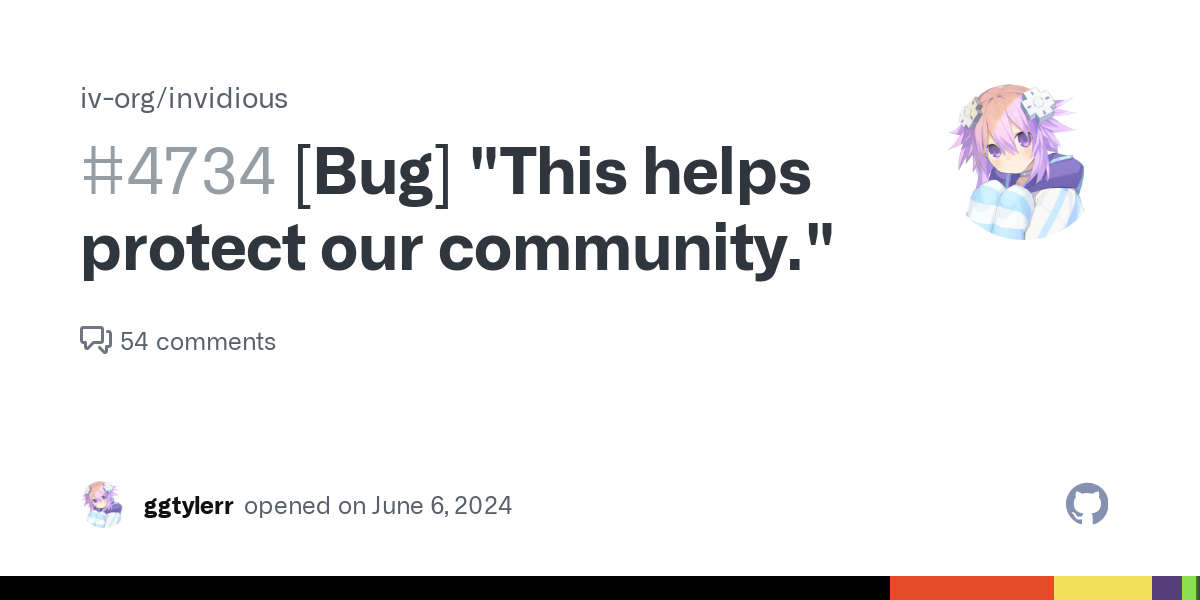- cross-posted to:
- technology@lemmy.world
- cross-posted to:
- technology@lemmy.world
EDIT: For those who are too lazy to click the link, this is what it says
Hello,
Sad news for everyone. YouTube/Google has patched the latest workaround that we had in order to restore the video playback functionality.
Right now we have no other solutions/fixes. You may be able to get Invidious working on residential IP addresses (like at home) but on datacenter IP addresses Invidious won’t work anymore.
If you are interested to install Invidious at home, we remind you that we have a guide for that here: https://docs.invidious.io/installation/..
This is not the death of this project. We will still try to find new solutions, but this might take time, months probably.
I have updated the public instance list in order to reflect on the working public instances: https://instances.invidious.io. Please don’t abuse them since the number is really low.



Title is kinda misleading. The issue only affects public instances, and it has been an ongoing problem since many months ago. Basically the moment youtube detects lots of traffic from one IP it gets blocked, and need sign-in.
It seems this block just became harder to work around, and they started blocking all IPs from hosting providers, but I’m sure a solution will be found eventually.
If you have a spare laptop/PC/raspberry pi you can host your own invidious in your home. It won’t get blocked, it will be much faster, and you can use options that are usually disabled on public instances (the API and DASH quality).
Then you can add something like tailscale/twingate into the mix to access it outside your home. Self hosted wireguard can also work if your ISP gives you a static IP or you setup a DDNS service. I personally use twingate because I don’t like opening any port in my router.
Can i ask a noobie technical question? here or dm’s wherver you are ok with.
I appreciate the cogent context and solution oriented post.
I’d also say though that from a privacy standpoint self-hosting invidious is still allowing GeoIP info to be attached to downloaded videos, which is a fingerprint which can be used by data mining. Admittedly rather abstract as in this case the primary point of deplatforming might just be to de-ad, or give better video control, etc, and not obfuscate for privacy sake.
As I said though great points!
i feel like this makes it on par with eg newpipe right? since newpipe doesn’t have a server, so all requests are direct to youtube
people seem to be okay with the fingerprint trade-off… and a vpn (as in, an external vpn that invidious routes all traffic through) would help with that
Exactly true in the newpipe comparison. Same with YT-dlp variants.
I’m an always on VPN sort of guy, but most are not. So yes the fingerprint tradeoff is one I accept within my ability to deal with inconvenience. Mostly upside at this point with no ads, just sponsors that slip through sponsor block.
My fingerprint it’s perfect, but I know it’s working as I can see other peoples feeds are more adaptive and directed then whatever I get. I know I have a hole when I see something spammy too.
https://coveryourtracks.eff.org/ always worth a check.
I feel like I only know just enough about docker containers to get myself into trouble.
I’ve ran a few docker containers for things like Minecraft Bedrock for my kid and his friends and a local Ubooquity server and stuff like that but I’m wondering if anyone has made a guide for glutun VPN bind + an Invidious instance with tailscale/twingate setup you mentioned.
I am just an iPhone pleb who really loved using Yattee while it worked and assume a similar setup to what you described would allow me to point my Yattee to the self-hosted instance.